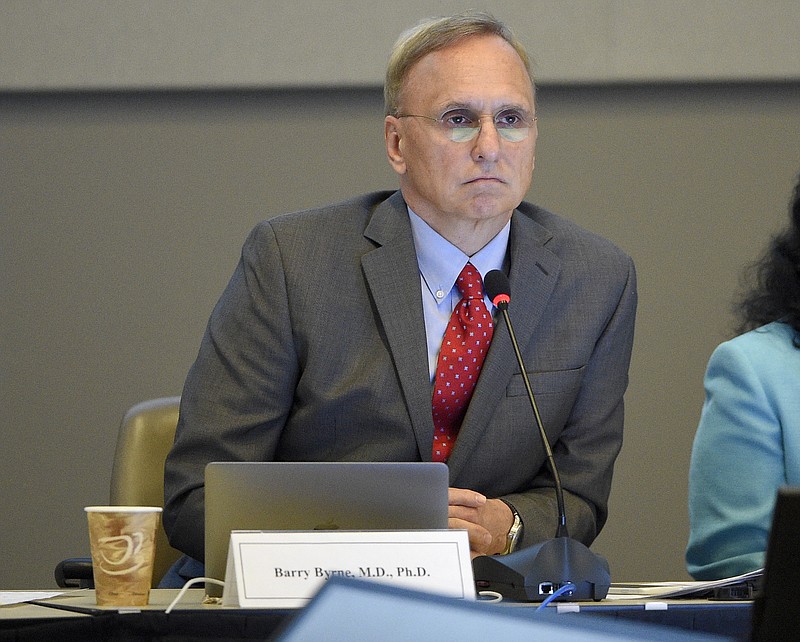SILVER SPRING, Md. (AP) - A potentially groundbreaking treatment for a rare form of blindness moved one step closer to U.S. approval Thursday, as federal health advisers endorsed the experimental gene therapy for patients with an inherited condition that gradually destroys eyesight.
The panel experts to the Food and Drug Administration voted unanimously in favor of Spark Therapeutics' injectable therapy, which aims to improve vision by replacing a defective gene needed to process light.
The vote amounts to a recommendation to approve the therapy. The FDA has until mid-January to make its decision and does not have to follow the panel's recommendation, though it often does.
If approved, Luxturna would be the first gene therapy in the U.S. for an inherited disease and the first in which a corrective gene is given directly to patients. While the therapy from Spark Therapeutics targets a small group of patients - about 2,000 in the U.S. - experts say it could pave the way for other genetic treatments for a variety of inherited conditions.
Panelists debated several specifics of the treatment, splitting on whether to require a minimum age for treatment; the company says the drug is intended for those 3 years and older. Panelists concluded that the science behind the drug - based on research from the Children's Hospital of Philadelphia - was remarkably strong with few serious side effects.
Several patients attended the meeting to urge panelists to support the drug, relating experiences of seeing snow, stars and the moon for the first time. In most cases, the patients' travel expenses were paid for by the drug's developer.
Katelyn Corey, 24, described her life before the treatment as "a black and white film."
"Within days of the first treatment I could see vibrant colors again," Corey said. "I could see the clock tower of Philadelphia City Hall at night when mere days before I thought it was the moon."
Ashley Carper, a mother of two children with the disorder, said treatment has allowed her 11-year-old son Cole to read large-print books and write his own homework. Previously he could only read with Braille. Cole said the improvements extend beyond schoolwork.
"I can stay out later when my friends are outside playing and now I feel like part of the group," he said. "My vision is not perfect, but what I do have is still really important to me."
Researchers tested the treatment by recording patients' ability to complete an obstacle course at varying levels of light, simulating real-world conditions like navigating a dark stairwell. A hallmark of the inherited disorder is difficulty seeing a night. Patients with the mutation generally start losing their sight before age 18, almost always progressing to total blindness.
One year after treatment 18 out of 20 patients who received the injection showed the maximum improvement in completing the obstacle course, and 13 completed the task at the lowest level of light. None of the patients in a comparison group did.
Doctors deliver the therapy with an injection in each eye that inserts a replacement gene into the retina via a modified virus.
Philadelphia-based Spark Therapeutics hopes to use its technology to treat other retinal disorders, including one called choroideremia, which affects about three times as many people as the condition currently under FDA review. The company is also investigating therapies to treat the blood disorder hemophilia and diseases of the nervous system.
As a potential breakthrough therapy for a rare disease, much of the discussion around Luxturna has focused on its cost. Drugmakers often price similar drugs at $250,000 or more. Spark has not given an estimated cost, which companies usually announce only after approval. But the company's stock ticker symbol "ONCE" reinforces the company's hope that this will be a one-time treatment - and expense.
"It is the aspiration," Spark Therapeutics CEO Jeff Marrazzo told The Associated Press prior to the meeting.
Pharmaceutical analyst Michael Yee estimates the drug will be priced between $350,000 and $450,000 per injection. He expects sales of $40 million to $50 million in 2018, growing to as much as $100 million in 2019.
___
AP Medical Writer Marilynn Marchione contributed to this story.
